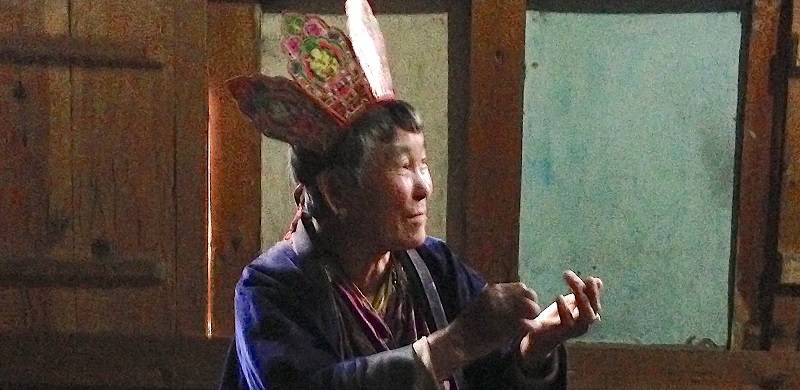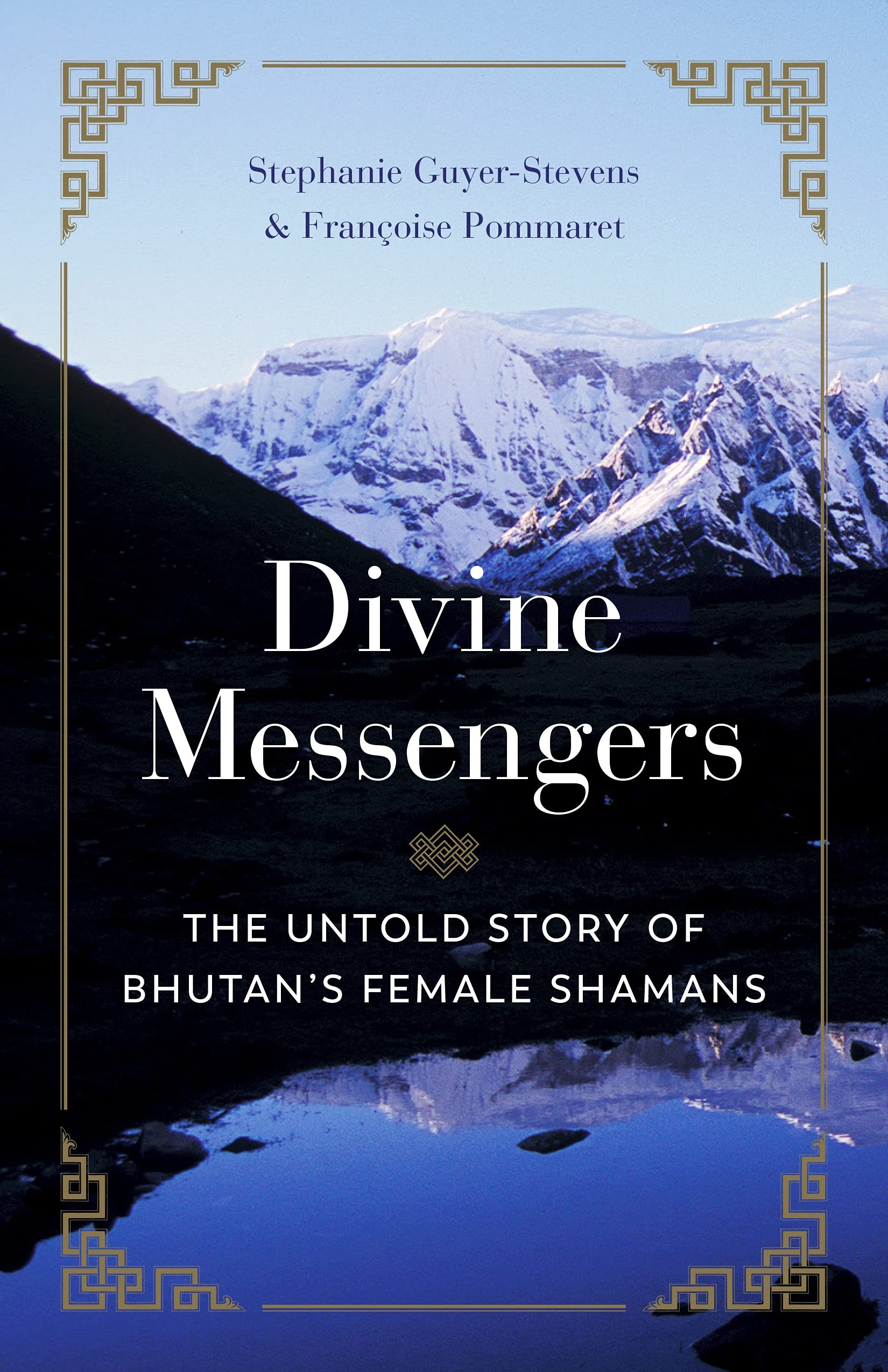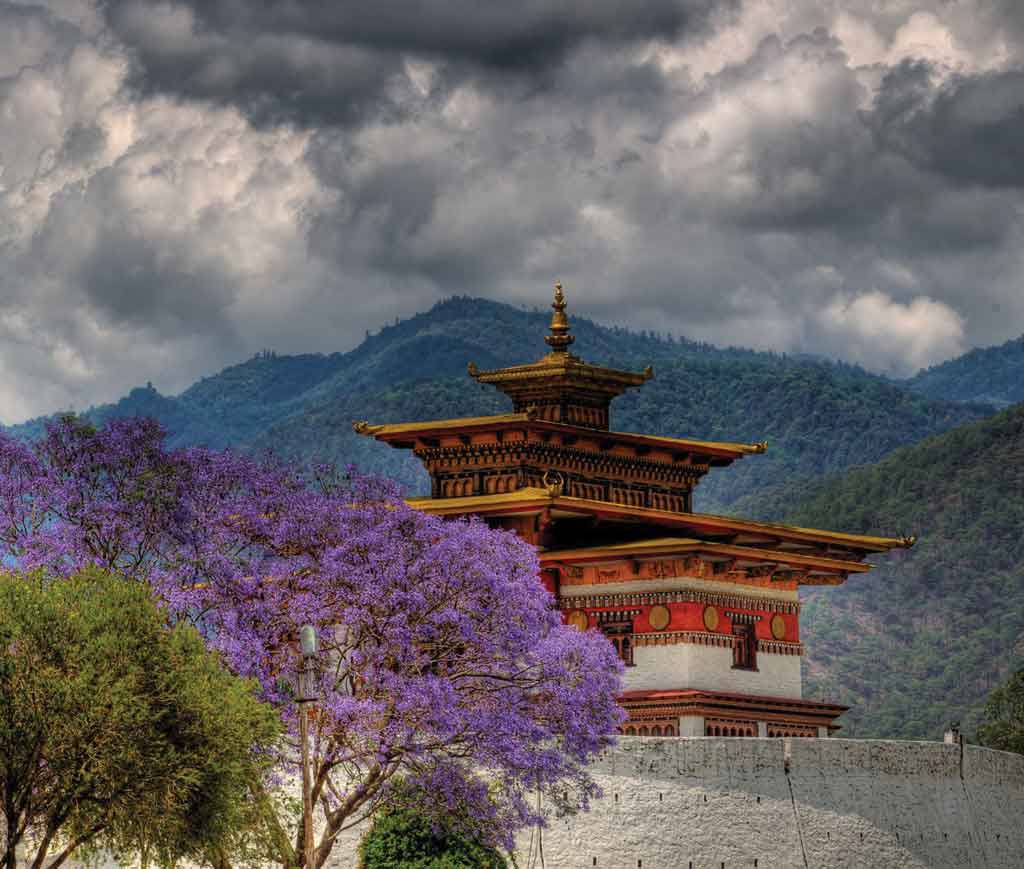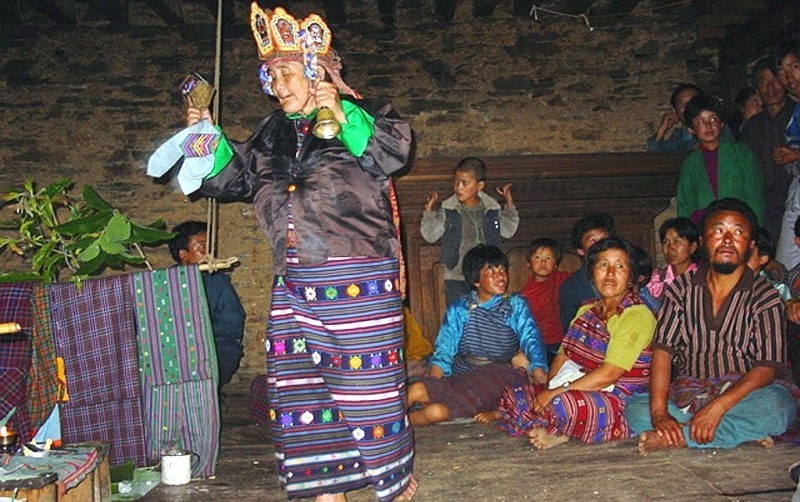
Our culture thrives on the art of stories. It has been embodied by story tellers who wove magic and created spells through the art of oral story-telling. It is part of the fabric of every family and village tribe: the threads drawn from the stories we have heard from our elders and the myths of our ancestors or great rulers. Such stories help us put our lives in perspective. We are not alone in this. We have much to learn about stories from the Himalayan Kingdom of Bhutan, where spirituality is at the core of the people’s belief.
 Having visited Bhutan, I was awe-struck at how this isolated kingdom has set about embracing the better aspects of modernity and civilisation, while rejecting what they do not need. They have excluded certain aspects such as commercialism and open industrialisation though after extensive debate and consideration.
Having visited Bhutan, I was awe-struck at how this isolated kingdom has set about embracing the better aspects of modernity and civilisation, while rejecting what they do not need. They have excluded certain aspects such as commercialism and open industrialisation though after extensive debate and consideration.
They have emphasised certain aspects of development and include these in government policy and societal practices. For example, their commitment to being carbon neutral and climate protection had led them to having the highest level of forest cover, the use of hydro-electric power for their energy requirements and outlawing smoking as a social pollutant.
Buddhism is a strong incentive. It is not only a living religion but the very code of life in Bhutan. People exude an air of spirituality. One senses it in the trainee monks and the common people alike.
Whereas a Pakistani economist Dr Mahbub ul Haq developed his Human Development Index, only an economist in Bhutan would define the Happiness Index and work on perfecting their meditation practice in their spare time. Some advanced practitioners of Buddhism practice meditation to such an extent that spiritualists are said to be able to regulate their body temperature at will. For example the intrepid female explorer Alexandra David-Neel on her journey to Lhasa in the 1920s could dry her wet garments through high temperature meditation. In case you want to emulate her, be warned that it takes only 5,000 hours of solid meditation to perfect that level of control of mind over body!
Such spirituality extends also to the living dead. In the local language they are referred to as deloms - “those returned from the dead” - the Tibetan equivalent of deloms. These are women who have travelled into the afterlife and returned, i.e., the equivalent of our djinns.
Deloms combine the powers of mysticism and healing, acting also as mediums with access to spirits. They are said to travel to the realms of hell and bring back messages. In a way, they are intimately connected to the Buddhist notion of karma and rebirth. Unlike other cultures though, these women play a positive and important role in society and are appreciated for that role.
Stories of these female shamans have been recorded in a fascinating book Divine Messengers: the Untold Stories of Bhutan’s Female Shaman by journalist and anthropologist Francoise Pommaret and journalist Stephanie Guyer Stevens. The book profiles seven such deloms, portraits in time that capture the world that exists between shamanism and Buddhism in modern Bhutan.
These are women said to be possessed by deities who act as local doctors and use prayers to heal physical ailments. Physical healing, they believe, comes when the imbalance in the body - usually coming from evil or vengeful spirits - are exorcised. The shaman’s role is to act as medium in order to find out what upset the spirit in the first place, and to find a way to appease it through rituals that include dancing and chanting. But their role also involves that of Buddhist teachers within their communities on how to lead a more compassionate life.
They sound more like informal village therapists, getting involved with the day-to-day dramas which plague families the world over – disputes over land and inheritance, social conflicts and issues that one would be wary of confiding in monks. Their role has changed over time. People nowadays are more preoccupied with earthly pursuits than life after death, hence their role changing more from consulting dead ancestors to playing informal confidants to people; the modern day equivalent of Catholic confessions.

We know that the people we love die - and so will we. That is an inescapable fact. But we live our lives like beetles, keeping ourselves busy and distracting ourselves from this inevitability The cure for this horror must be where shaman and deloms come in – to focus on life goals, compassion and empathy to give meaning and purpose to our lives. In reading these stories of these brave women in Bhutan, it is almost as if we read our own stories.
In the Stone Age, language evolved as a way of keeping the tribe in check – to have people tell tales on the morals and values that prevailed in the tribe. Deloms seem to play an active and positive role in modern day Bhutanese in village life by navigating the complex interplay between physical, spiritual and modern worlds.
I would argue that each society needs such delom-like figures. They remind us of distinctive enduring values - a way of navigating our turbulent, complex, modern world. In many natural ways, our lives have not changed. Stories and story tellers are reminders of resilience, provide hope and encourage us to appreciate the magic of the human spirit.
 Having visited Bhutan, I was awe-struck at how this isolated kingdom has set about embracing the better aspects of modernity and civilisation, while rejecting what they do not need. They have excluded certain aspects such as commercialism and open industrialisation though after extensive debate and consideration.
Having visited Bhutan, I was awe-struck at how this isolated kingdom has set about embracing the better aspects of modernity and civilisation, while rejecting what they do not need. They have excluded certain aspects such as commercialism and open industrialisation though after extensive debate and consideration.They have emphasised certain aspects of development and include these in government policy and societal practices. For example, their commitment to being carbon neutral and climate protection had led them to having the highest level of forest cover, the use of hydro-electric power for their energy requirements and outlawing smoking as a social pollutant.
Buddhism is a strong incentive. It is not only a living religion but the very code of life in Bhutan. People exude an air of spirituality. One senses it in the trainee monks and the common people alike.
Whereas a Pakistani economist Dr Mahbub ul Haq developed his Human Development Index, only an economist in Bhutan would define the Happiness Index and work on perfecting their meditation practice in their spare time. Some advanced practitioners of Buddhism practice meditation to such an extent that spiritualists are said to be able to regulate their body temperature at will. For example the intrepid female explorer Alexandra David-Neel on her journey to Lhasa in the 1920s could dry her wet garments through high temperature meditation. In case you want to emulate her, be warned that it takes only 5,000 hours of solid meditation to perfect that level of control of mind over body!
I would argue that each society needs such delom-like figures. They remind us of distinctive enduring values - a way of navigating our turbulent, complex, modern world
Such spirituality extends also to the living dead. In the local language they are referred to as deloms - “those returned from the dead” - the Tibetan equivalent of deloms. These are women who have travelled into the afterlife and returned, i.e., the equivalent of our djinns.
Deloms combine the powers of mysticism and healing, acting also as mediums with access to spirits. They are said to travel to the realms of hell and bring back messages. In a way, they are intimately connected to the Buddhist notion of karma and rebirth. Unlike other cultures though, these women play a positive and important role in society and are appreciated for that role.
Stories of these female shamans have been recorded in a fascinating book Divine Messengers: the Untold Stories of Bhutan’s Female Shaman by journalist and anthropologist Francoise Pommaret and journalist Stephanie Guyer Stevens. The book profiles seven such deloms, portraits in time that capture the world that exists between shamanism and Buddhism in modern Bhutan.

These are women said to be possessed by deities who act as local doctors and use prayers to heal physical ailments. Physical healing, they believe, comes when the imbalance in the body - usually coming from evil or vengeful spirits - are exorcised. The shaman’s role is to act as medium in order to find out what upset the spirit in the first place, and to find a way to appease it through rituals that include dancing and chanting. But their role also involves that of Buddhist teachers within their communities on how to lead a more compassionate life.
They sound more like informal village therapists, getting involved with the day-to-day dramas which plague families the world over – disputes over land and inheritance, social conflicts and issues that one would be wary of confiding in monks. Their role has changed over time. People nowadays are more preoccupied with earthly pursuits than life after death, hence their role changing more from consulting dead ancestors to playing informal confidants to people; the modern day equivalent of Catholic confessions.

We know that the people we love die - and so will we. That is an inescapable fact. But we live our lives like beetles, keeping ourselves busy and distracting ourselves from this inevitability The cure for this horror must be where shaman and deloms come in – to focus on life goals, compassion and empathy to give meaning and purpose to our lives. In reading these stories of these brave women in Bhutan, it is almost as if we read our own stories.
In the Stone Age, language evolved as a way of keeping the tribe in check – to have people tell tales on the morals and values that prevailed in the tribe. Deloms seem to play an active and positive role in modern day Bhutanese in village life by navigating the complex interplay between physical, spiritual and modern worlds.
I would argue that each society needs such delom-like figures. They remind us of distinctive enduring values - a way of navigating our turbulent, complex, modern world. In many natural ways, our lives have not changed. Stories and story tellers are reminders of resilience, provide hope and encourage us to appreciate the magic of the human spirit.

